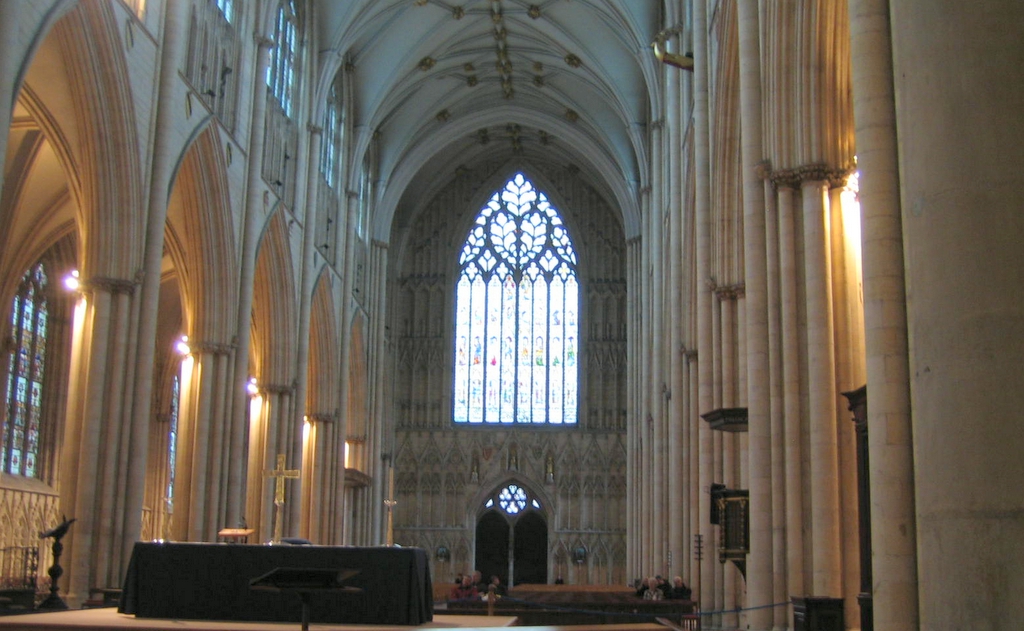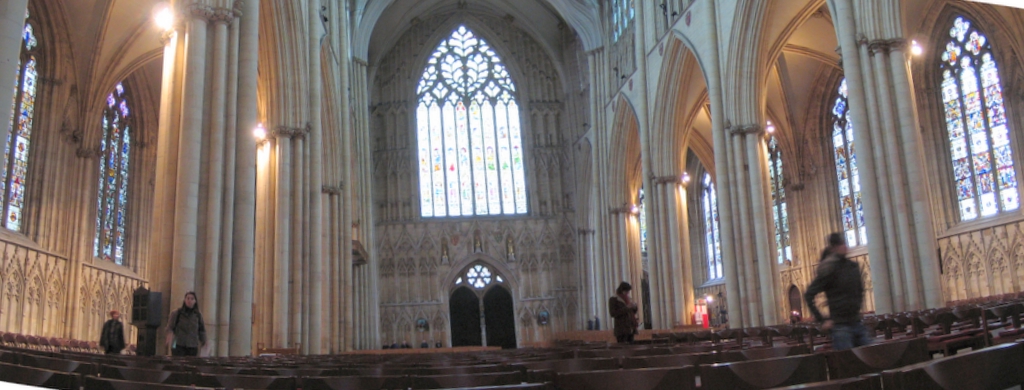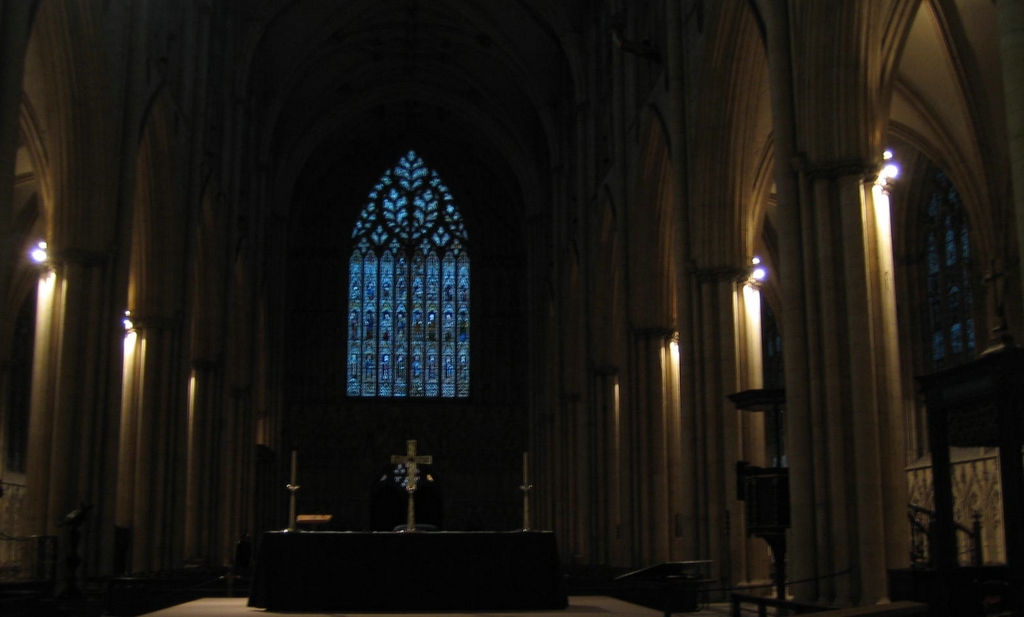

Let's contemplate our Nave here for a while: Above, you are looking west at England's widest Gothic nave (started in 1291) through to the great west window (1338) built in the Gothic Decorated style characteristic of this area of the Minster. Decorated Gothic is big on elaborate windows: Note the heart shape at the top of the great window. The nave spans the foundation of the Norman cathedral, itself a 365-foot-long house of worship with 7-foot-thick walls built after William the Conqueror finally subdued the rascally Yorkshires. Much of what we see here was restored after an 1840 fire left this area roofless and blackened.
The clerestory windows (get a glimpse of them in the upper left) contain several panels from the earlier Norman Minster. York did this to save money, not out of any sense of history. Either way, England has only a little glass from the 12th century and York has some panels on the life of St. Benedict, fitting for a cathedral with monastic roots. York's great rival, Canterbury cathedral, has a much better set of Norman clerestory panels describing the lineage from Adam to Christ. Be that as it may, York's Minster contains the most extensive medieval stained glass collection in England -- in both quality and quantity. (For a 360 degree view of York's nave from clerestory-window height, click here.)

Above is another view that shows the northern clerestory windows made possible by the ribbed vaulting (those arches) supporting more of the roof's weight, and freeing up a lot of window space since all that stone was no longer needed. Below is a picture shot straight up showing the bosses.

Yes, there's a bit of a really old boss on the far right, but, fortunately for all in the working world -- including himself -- he's been put out to pasture. The bosses we're talking about here are those meter-wide decorated knobs hiding the joints where the arched vaults meet. These are replacements of the medieval bosses lost in the 1840 fire. The eight center bosses depict scenes from the life of Christ and his mother, Mary. The beams themselves are made of oak and then plastered and painted white. Medieval builders couldn't figure out how to span such a width with stone.

Above is a wider view of the Nave, still looking west. What you don't see is a lot of small altars common in some cathedrals which (like York's) have monastic roots. After all, all of those priests need a place to say mass in the morning. York lost most of these side altars during the Reformation, along with much of its Catholic decorations and windows.

Above is a view of the Nave during the dark ages. Actually this was what it looked like at the end of our visit. The sun goes down early in Mid March in York but its absence adds to the spirituality of the place.
Here's another view with the modern altar used for Nave services. If you look at about the 1:00 position, you'll see a golden dragon head protruding from the triforium. Its usage is debated but many think it held a pulley with a chain through the dragon's mouth to lift the 50-foot-high baptismal font cover. Needless to say, the font is long gone but the pulley holder drags on. The altar in the foreground is, obviously, a modern addition allowing the celebrant to face the congregation during services.
